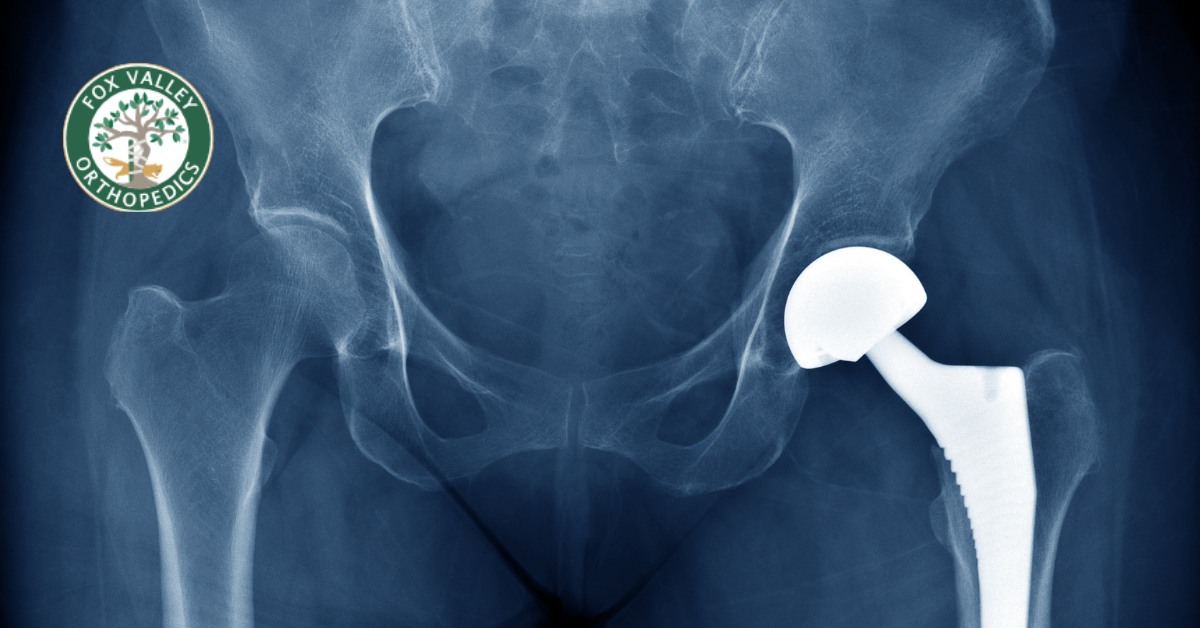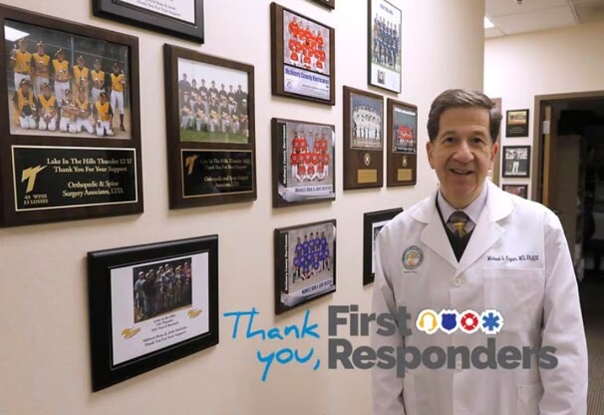Your Guide to Total Joint Replacement
- Category: Blog
- Posted On:

Ensuring a Successful Joint Replacement
Although many people push through minor aches and pains everyday, chronic joint pain can get in the way and impacts your quality of life. Fortunately, having a total joint replacement is an option to provide long-lasting relief that can get you back to your everyday routine in no time.
If you're considering having a total joint replacement, it's important that you know what to expect throughout the process to ensure a successful and speedy recovery. The experts at Fox Valley Orthopedics are here to outline everything you should know from your first appointment to recovering after your procedure.
When to Consider Surgical Intervention
You’re In Pain While Resting
When suffering from joint pain, more often than not, people may experience an increase in pain during activities that utilize the affected joint. However, if your joint is still causing you pain when sitting or lying down, surgery may be the next step in your treatment plan.
Your Pain Gets in the Way of Simple Tasks
Dealing with chronic joint pain can make everyday activities that you don’t think twice about doing feel like a mountain of a task. If you’re experiencing pain that causes you to avoid doing things like climbing stairs, sitting, or walking—joint replacement surgery may be able to provide you with relief.
Other Less-Invasive Pain Management Options Aren’t Helping
Even if other pain management techniques were able to provide you with temporary pain-relief before, it’s possible for your condition to worsen over time, rendering them ineffective. If less-invasive options like physical therapy, injections, and medications no longer work for you, having a joint replacement is an option for a more permanent solution to your pain.
How to Describe Your Pain to Your Doctor
When you're suffering from chronic and persistent joint pain, it is essential that you describe your pain as accurately as you can when seeking treatment. When you can effectively communicate the location, sensation, and severity of your pain—your orthopedic care team will be better able to understand the cause of your pain and how to treat it.
Severity
If your doctor asks you to rate your pain on a scale of 1 to 10, it is imperative that you give more detail than just providing a number. Because pain tolerance varies from person to person, what feels excruciating to you may feel bearable for someone else.
To make sure that your doctor understands your level of pain, be sure to follow up with context. So if you say that your joint pain is an 8, you may follow up by saying that you don’t think painkillers will help to manage it.
Feeling
When communicating joint pain to your orthopedic doctor, it isn't enough to say that it hurts. While it can be hard to find the right words to explain sensations and feelings, having a few words and phrases that fit what you feel can help to convey that effectively.
Being able to differentiate the sensations you're experiencing can help your doctor to find the source of your pain. For example, feeling a sharp pain in your hip when you walk may have a different cause than a dull, persistent pain radiating in your hip and lower back.
Some words you can use to describe the sensations you’re feeling include:
- Aching
- Acute
- Burning
- Cramping
- Dull
- Hot
- Nauseating
- Persistent
- Pinching
- Pulsing
- Radiating
- Sharp
- Shooting
- Sore
- Sporadic
- Stabbing
- Stiff
- Tender
- Tingling
- Throbbing
- Warm
Location
Describing the location of your pain is also essential to help your doctor understand your unique condition. Although you may not know the technical name for the parts of your body, pointing to the area and describing the location can help narrow it down.
Some words that can help you to be as specific as possible include:
- In
- Inside
- Left
- Lower
- On
- Over
- Right
- Under
- Upper
Aftercare to Support a Speedy Recovery
Relax
The best thing you can do after having a total joint replacement is to catch up on your rest. While it can be tempting to return to your routine as soon as you can, it is recommended that you take some time off from school or work to give your body a chance to rest without interruptions.
Because your body does most of its healing when you’re asleep, getting more rest than you usually do will allow your body to recover quickly. Aim to get the recommended 7-9 hours of good quality sleep each night and take short naps throughout the day.
You should also ask your doctor if there are specific sleep positions that you should follow to prevent swelling.
Use Optimal Sleep Positions
After having a total hip replacement, it is important that you use proper sleeping techniques to help avoid complications with your healing process such as a dislocation or blood clots in your legs.
Follow these sleep tips to ensure you have a speedy recovery:
- Avoid stomach-sleeping.
- Make sure you don’t cross your legs or ankles.
- Sleep on your non-operative side.
- Sleep with a pillow between your knees.
- Sleep on a firm mattress if you can.
Use Heat Pads
After your procedure, you may experience muscle stiffness around the affected area. You can use heating pads to reduce muscle tension and help to improve your range of motion.
Use Ice Packs
It’s also common to experience inflammation surrounding the surgical site after your procedure. Applying ice can help to reduce uncomfortable swelling.
Eat a Healthy Diet
Eating a healthy diet after your procedure also helps your body to recover as quickly as possible. Having a variety of nutrient-dense fruits and vegetables can help your body to ward of infection.
Some healthy foods to eat while in recovery include:
- Beans and lentils
- Berries
- Carrots
- Citrus fruits
- Dark leafy greens
- Eggs
- Nuts
- Poultry
- Potatoes
- Whole grains
Try to Move About
Following your procedure, you must get up and move about. This improves your blood flow throughout your body, helping your surgical site to heal. While it is advised that you take it easy and follow the aftercare instruction outlined by your doctor, getting up and walking around once every hour can help you recover faster.
Moving about also helps to prevent deep vein thrombosis (DVT), which is a serious condition where a deep blood clot forms in a vein. This typically happens in the thigh or lower half of your leg.


